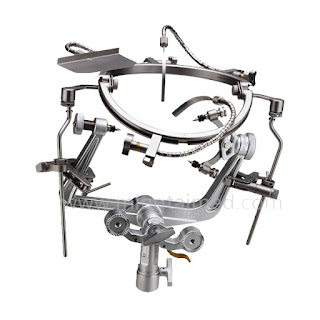The position of the surgery light in the operating room is very particular
It is well known that the construction of hospital lighting system is a very complicated systematic project, there are many places should be paid attention to, there are also high requirements for lighting. In order to maintain a good and stable operating room light environment, the operating room should be protected from direct sunlight, it can also be covered with tinted glass to facilitate artificial lighting. The artificial lighting in the operating room is divided into general lighting, operating table key lighting, viewing light lighting, signal lighting and so on. Operating room general lighting requirements are higher, however, the installation position of the lamp is often limited by the number and location of air outlets and other equipment, this not only meets the requirements of the specified high illumination, but also limits the number of lamps to an appropriate range, while taking into account the requirements for air conditioning energy saving in operating room, the heat of the bulb should be as small as possible. It is recommended to use the LED light source. Since the LED is a cold light source, there is almost no temperature rise in the room, and the patient has no feeling of discomfort. At the same time, the risk of dehydration caused by the illumination of the light source is avoided. In addition, it can also reduce the energy consumption of indoor air conditioners.
The CRI of the surgery light should be close to natural light, preferably between 4000 and 5000K, usually with a color rendering index Ra≥90.
Operating light should not be used with traditional magnetic ballasts, due to the zero-crossing of the AC current of the grid, lights powered by conventional magnetic ballasts will cause 100 strobes per second for a 50 Hz grid. Doctors work under this ever-changing source of stroboscopic light. Long-term work will inevitably cause fatigue of the pupil sphincter due to overuse, which will not only adversely affect the operation, but also cause some damage to the doctor's vision. At the same time, the AC buzz phenomenon of traditional magnetic ballasts can also cause interference in surgery.
The AC electronic ballast is a new type of rectifier composed of rectification and filtering, high frequency oscillation and rectifier coil protection circuit. Since the power frequency is greatly increased to 55 kHz, even 80 kHz, 100 kHz super audio, the flicker frequency of the luminaire is correspondingly increased to the area where the human eye is not sensitive, which alleviates the stroboscopic effect. At the same time, the buzzer interference is completely eliminated, the power consumption is greatly reduced, and the power factor of the luminaire is improved. The electronic ballast has a strong starting ability at low voltage and has great advantages, but unfortunately, the ultra-high frequency of the ballast also brings another adverse effect, that is, electromagnetic generated by high-frequency oscillation. Interference, that is to say, the higher the power frequency, the more serious the electromagnetic radiation phenomenon.
In summary, to solve these two problems, it is recommended to use LED light source lamps, that is, LED shadowless lamps. Since the LED working mode is driven by an external or built-in power supply, no ballast is needed, so the problem of stroboscopic can be effectively solved, good quality LED medical light can be almost strobed free; in addition, the use of high-end isolated power supply can effectively reduce the electromagnetic interference of the lamps for precision instruments and prolong their life.
The CRI of the surgery light should be close to natural light, preferably between 4000 and 5000K, usually with a color rendering index Ra≥90.
Operating light should not be used with traditional magnetic ballasts, due to the zero-crossing of the AC current of the grid, lights powered by conventional magnetic ballasts will cause 100 strobes per second for a 50 Hz grid. Doctors work under this ever-changing source of stroboscopic light. Long-term work will inevitably cause fatigue of the pupil sphincter due to overuse, which will not only adversely affect the operation, but also cause some damage to the doctor's vision. At the same time, the AC buzz phenomenon of traditional magnetic ballasts can also cause interference in surgery.
The AC electronic ballast is a new type of rectifier composed of rectification and filtering, high frequency oscillation and rectifier coil protection circuit. Since the power frequency is greatly increased to 55 kHz, even 80 kHz, 100 kHz super audio, the flicker frequency of the luminaire is correspondingly increased to the area where the human eye is not sensitive, which alleviates the stroboscopic effect. At the same time, the buzzer interference is completely eliminated, the power consumption is greatly reduced, and the power factor of the luminaire is improved. The electronic ballast has a strong starting ability at low voltage and has great advantages, but unfortunately, the ultra-high frequency of the ballast also brings another adverse effect, that is, electromagnetic generated by high-frequency oscillation. Interference, that is to say, the higher the power frequency, the more serious the electromagnetic radiation phenomenon.
In summary, to solve these two problems, it is recommended to use LED light source lamps, that is, LED shadowless lamps. Since the LED working mode is driven by an external or built-in power supply, no ballast is needed, so the problem of stroboscopic can be effectively solved, good quality LED medical light can be almost strobed free; in addition, the use of high-end isolated power supply can effectively reduce the electromagnetic interference of the lamps for precision instruments and prolong their life.




评论
发表评论